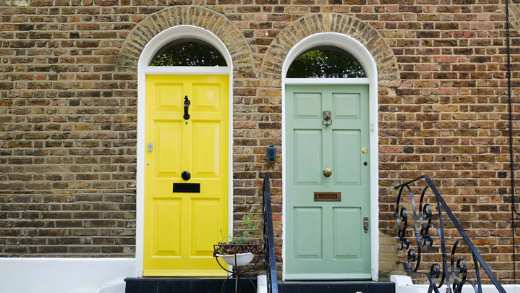Buildings insurance for leasehold properties
If you own a leasehold property, understanding how insurance works is a crucial part of the process. In this article we’ll discuss all things leasehold building insurance.

Key points
- Leaseholders own a property for a set period, while freeholders own both the property and the land outright.
- Responsibility for buildings insurance usually lies with the freeholder, and costs are typically shared among leaseholders via a service charge.
- Leasehold buildings insurance may cover things like storms, fire, and vandalism, but not general wear and tear, pest infestations, or damage from poor workmanship.
- If you rent out your leasehold property, buildings insurance should still apply—but always check your lease agreement and confirm with the freeholder or building manager.
- Additional charges for leasehold property can include ground rent, service fees, admin charges, and management fees for shared spaces.
What’s the difference between a leaseholder and a freeholder?
A leaseholder is someone who owns a property for a fixed period as per the lease agreement, while the land is owned by someone else.
A freeholder is someone who owns a property and the land it stands on outright, with no time limit on ownership.
How do you know if you’re responsible for buildings insurance on a leasehold property?
This will depend entirely on your lease agreement. Generally, the freeholder who owns the land is responsible for arranging any buildings insurance on leasehold properties. The cost of this will usually be split among the leaseholders through an annual service charge.
What is and isn’t covered by leasehold buildings insurance?
This can vary between providers. Here’s what may or may not be covered:
| Covered | Not covered |
|---|---|
| Frozen or burst pipes | General wear and tear |
| Storms and floods | Pest infestations |
| Fire and explosions | Damage caused by pets |
| Vandalism | Damage from poor workmanship |
| Falling trees or lampposts | |
| Subsidence |
Am I covered if I rent out my leasehold property?
Again, this depends on the leasehold agreement. As the freeholder usually arranges the buildings insurance for leasehold properties, this should still cover your property even if you rent it out. However, make sure you check your lease agreement and make sure it’s been agreed by the freeholder or building manager.
What do I need to consider when choosing leasehold building insurance?
Generally, you should consider the following things before getting leasehold buildings insurance:
- If you are a joint freeholder of properties, you’ll need to ensure that the insurance also covers any communal areas.
- Find out how much it will cost to rebuild the property to make sure your cover is enough. This is different from the value of your home.
As a leaseholder, what additional charges do I have to pay?
As well as any rent or mortgage you pay on your property, there might also be additional charges such as:
- ground rent, which is paid directly to the freeholder of the land your property stands on.
- service fees, which cover the cost of maintaining or repairing communal areas, like stairways or gardens.
- admin charges, to cover services done by building managers, like remortgaging or altering rental agreements.
- management fees, if you live on a new build estate, it’s quite common to have to pay additional charges for upkeep of shared spaces.

Ready to get Aviva Signature home insurance cover?
Aviva home insurance protects your home inside and out – covering your building and belongings.

